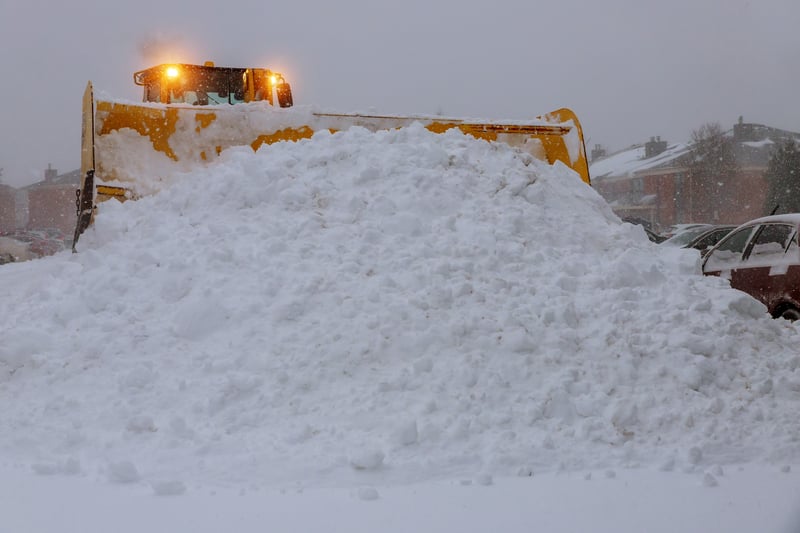Using Radial Tires to Increase the Productivity of Snow Removal Equipment
From mid-sized wheel loaders moving snow at the mall to compact loaders and backhoe loaders clearing neighborhood sidewalks, these versatile pieces of equipment have proven indispensable for both commercial and residential snow removal. A simple and easy way to squeeze even more performance and profit from these valuable pieces of machinery is by switching them to an application-specific radial tire.

Why Wheel Loaders
Wheel loaders are gaining favor with snow removal operations for a couple of significant reasons, one of which is visibility. Operators sit higher in a wheel loader than they do in more compact machines, which allows them to look down on the attachment and get a better view of where they’re working. This is beneficial as it allows quicker and easier snow removal, and it also cuts down on damage caused by inadvertently hitting obstacles. Another big benefit of a wheel loader’s height is increased ground clearance—a nice bonus when the snow really starts to pile up.
The Radial Benefit
Wheel loaders can move greater volumes of snow in large open spaces compared to other compact machinery, improving scale, and saving time and money. However, residential snow removal employs a lot of compact loaders, backhoe loaders, and skid steers, they're better suited to applications where space is constrained. Whatever the application, the right set of tires can make a big difference. There’s a reason that, for almost 40 years, all passenger cars in the US have come with radial tires as standard equipment: they’re superior to bias tires. Radial tires dissipate heat better than bias tires (allowing them to last longer) and have less rolling resistance (improving fuel economy). Both of these benefits are applicable in snow removal applications.
Increased Comfort
Snow removal normally means long hours, late nights, and early mornings for operators. Anything that improves operator comfort is beneficial for improving their productivity, efficiency, and safety. Whether you’re using a wheel loader, skid steer, or tractor, radial tires have flexible sidewalls that absorb impacts and jolts, earning them a well-deserved reputation for their comfortable ride. The shock-absorbing quality of radial tires can also reduce the wear and tear on your machine, lowering maintenance costs and increasing machine longevity.
Better Traction
Traction can have a substantial effect on the productivity and profitability of your machine, and tires play an oversized role in how well a machine connects with the ground. Radial tires are able to operate at lower pressures than bias tires, allowing them to produce a contact patch which puts more tread on the ground. Consequently, wheel loaders and other snow removal equipment outfitted with radials have better traction than those with bias tires. At the end of the day, this adds up to less slipping, sliding, and fuel consumption—and more productive machines.
Application-Specific Tires
Our Alliance 655 and 550 Multiuse tire has long been a favorites of those working in snow removal. Available for both wheel loaders and skid steers, the steel-belted 550 has a large, rectangular footprint that puts every bit of the tire’s tread on the ground—keeping operations productive, efficient, and profitable. Our Alliance 551 Multiuse is a relative newcomer—we just launched it in February—but has quickly developed a loyal following. A steel-belted radial, the 551 is specifically designed for work in the snow with a siped tread for maximum grip and a special rubber compound for use in cold weather.
From commercial construction companies to contractors and landscapers, snow removal is a popular way to keep an active income stream throughout the year. Because of this, it’s also becoming more competitive. If you’re interested in getting a leg up on other operations, increasing the productivity of your equipment, and improving your profits, contact your local dealer or rep today to learn about the benefits offered by our Alliance 655, 550 and 551 Multiuse tires.


